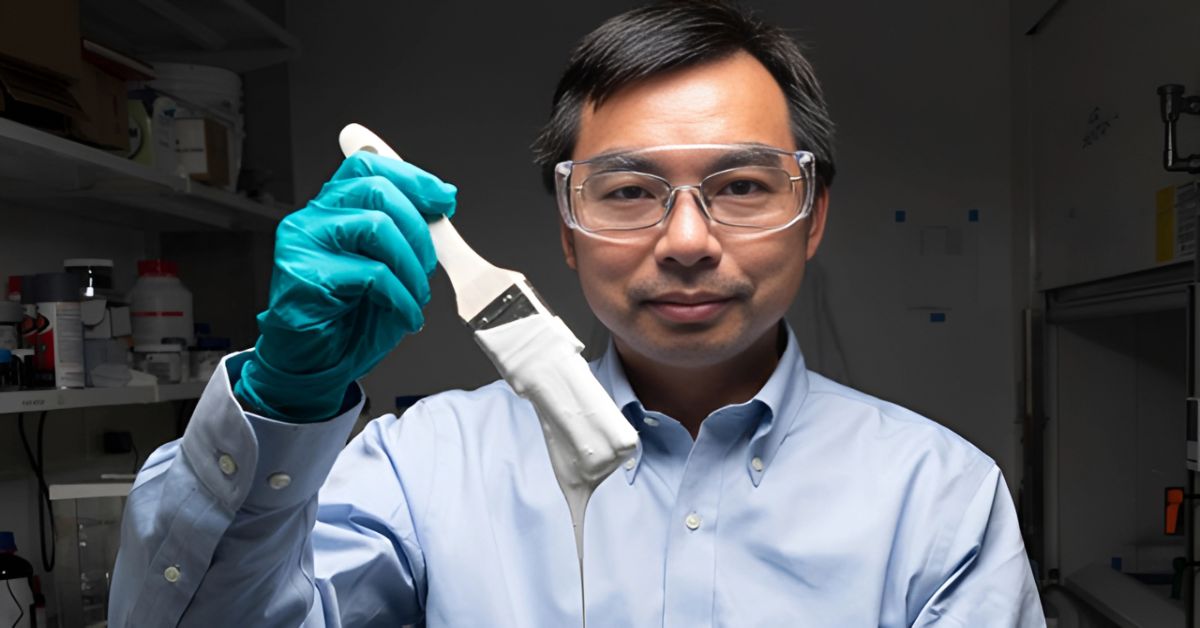In a revolutionary breakthrough, a team of researchers from Purdue University, USA, has developed the whitest paint ever created—an innovation that could dramatically reduce the need for air conditioning and help combat climate change. The paint, which reflects 98.1% of sunlight and emits infrared heat, can cool surfaces below ambient temperature, even in direct sunlight. This means that buildings coated with this paint can remain naturally cooler, significantly cutting electricity costs and reducing carbon emissions.
The research was led by Professor Xiulin Ruan of Purdue’s Mechanical Engineering Department, along with a dedicated team of graduate and undergraduate students. The project, which spanned over seven years, was driven by a singular vision: to create a paint that not only improves energy efficiency but also contributes to climate solutions on a global scale.
The Motivation Behind the Invention
Professor Ruan explained, “From the beginning, we wanted to create a paint that could replace the need for air conditioning in many cases by reflecting sunlight away from buildings and radiating heat into space. We saw it as a way to save energy and help slow global warming.”
With urban centers experiencing higher temperatures due to the “urban heat island effect,” the innovation couldn’t be more timely. Traditional white paints on the market reflect around 80% to 90% of sunlight but still absorb enough heat to warm buildings. Purdue’s ultra-white paint outperforms all previous formulations and even set a Guinness World Record in 2021 as the whitest ever recorded.
Read More: Harvard vs. Trump Administration: A Legal Battle Over Research Funding
The Science Behind the Paint
The effectiveness of the paint lies in its special chemical makeup. Unlike typical paints that use titanium dioxide, Purdue’s version uses barium sulfate, a substance known for its brightness and used in cosmetics and photo paper. The team used particles of varying sizes, which enables the paint to scatter more wavelengths of sunlight — enhancing its reflective power.
The paint also emits thermal infrared radiation, allowing it to lose heat effectively. In outdoor experiments, surfaces painted with the formula stayed 4.5°C cooler than the surrounding air during the day and even cooler at night. This cooling happens without consuming any electricity, making it a sustainable and cost-saving solution.
Real-World Benefits and Applications
This innovation offers immense potential for hot and humid countries like Bangladesh, where energy consumption from air conditioning is growing rapidly. In urban areas, where electricity grids are often strained during the summer months, the widespread use of this paint could ease pressure on infrastructure.
Researchers estimate that applying the paint to 1,000 square feet of roofing could deliver a cooling effect equivalent to 10 kilowatts of air conditioning — more than what many homes require. In real terms, this could lower energy bills, reduce greenhouse gas emissions, and improve public health by lowering indoor temperatures.Beyond buildings, the paint can be used on vehicles, outdoor storage tanks, data centers, and even spacecraft, where temperature regulation is critical. Its lightweight nature and passive cooling abilities make it versatile for a wide range of industrial and scientific uses.
Recognition and Future Development
Purdue University has filed patents for the technology and is collaborating with manufacturers to bring the paint to commercial markets. Initial batches are being tested for durability, colorfastness, and compatibility with various materials like concrete, metal, and plastic.The paint has already received international recognition and has been featured in top news outlets and scientific journals such as Cell Reports Physical Science and ACS Applied Materials & Interfaces. As the world seeks urgent solutions to climate change, this paint may serve as a simple yet powerful tool in the global sustainability toolbox.
This discovery is a prime example of how scientific innovation, driven by clear goals and environmental awareness, can lead to transformative solutions. As countries strive to meet climate targets and reduce dependence on fossil fuels, energy-efficient technologies like Purdue’s ultra-white paint offer hope for a cooler, greener future.
Reference: Purdue.edu


















